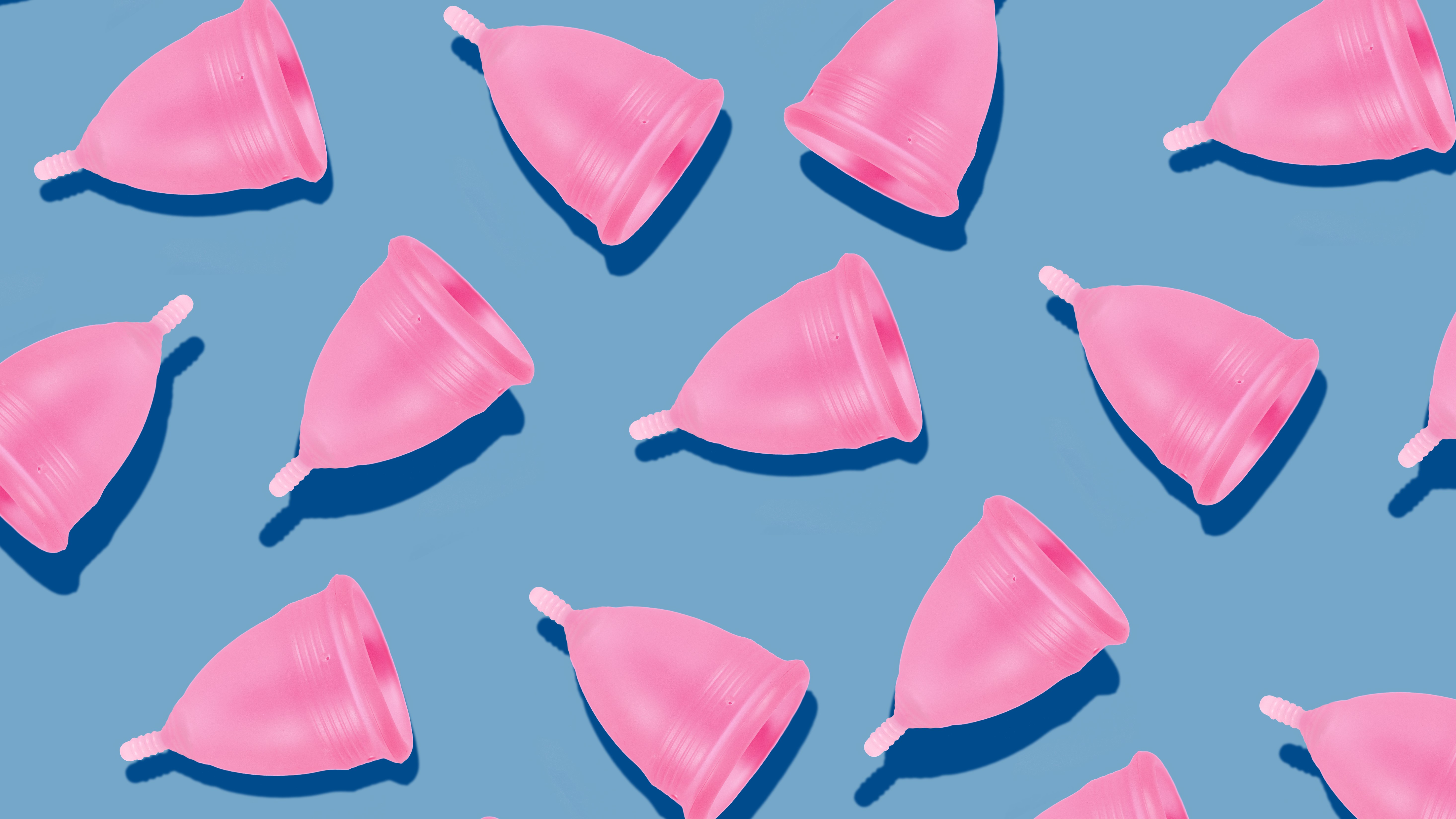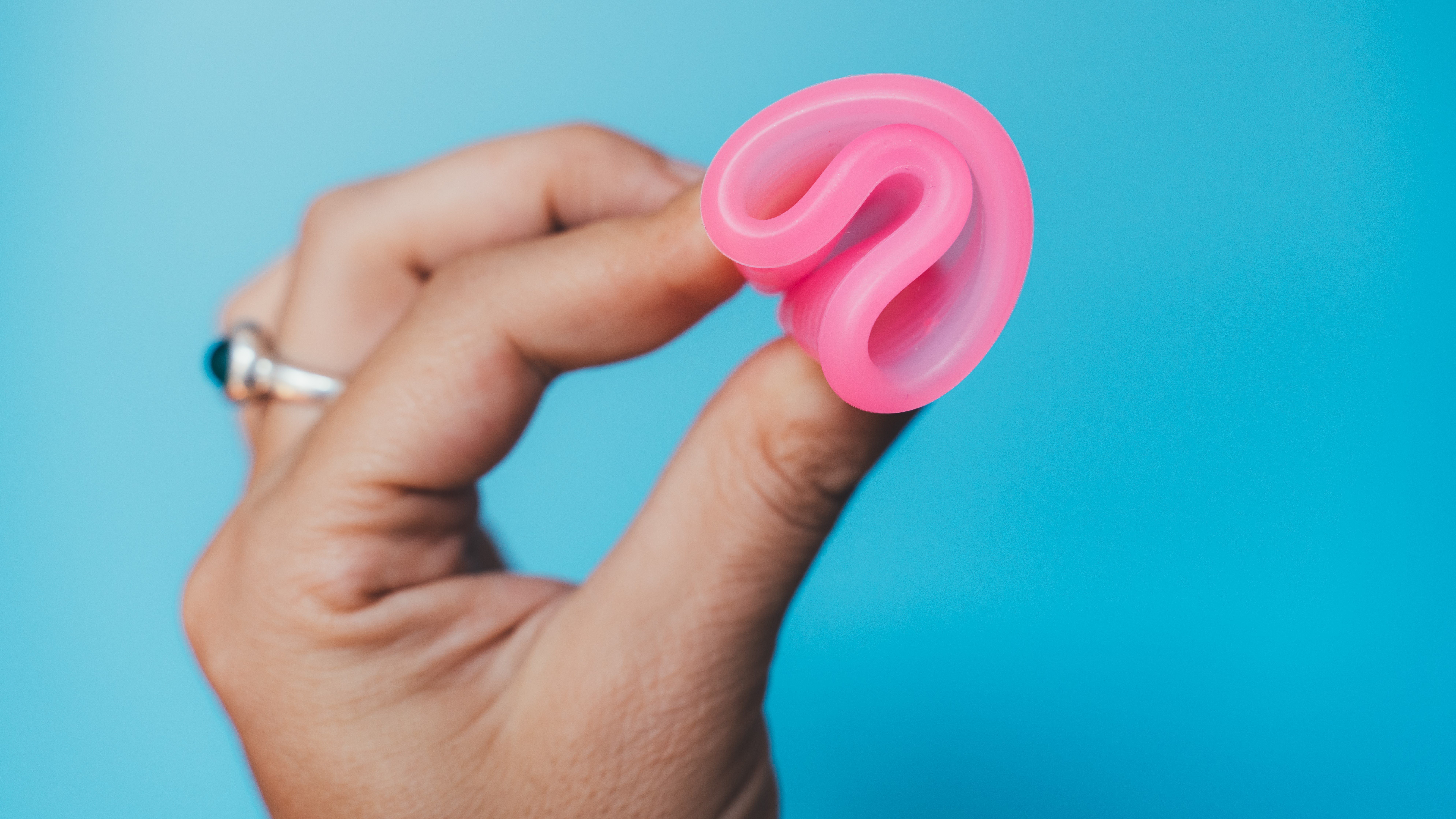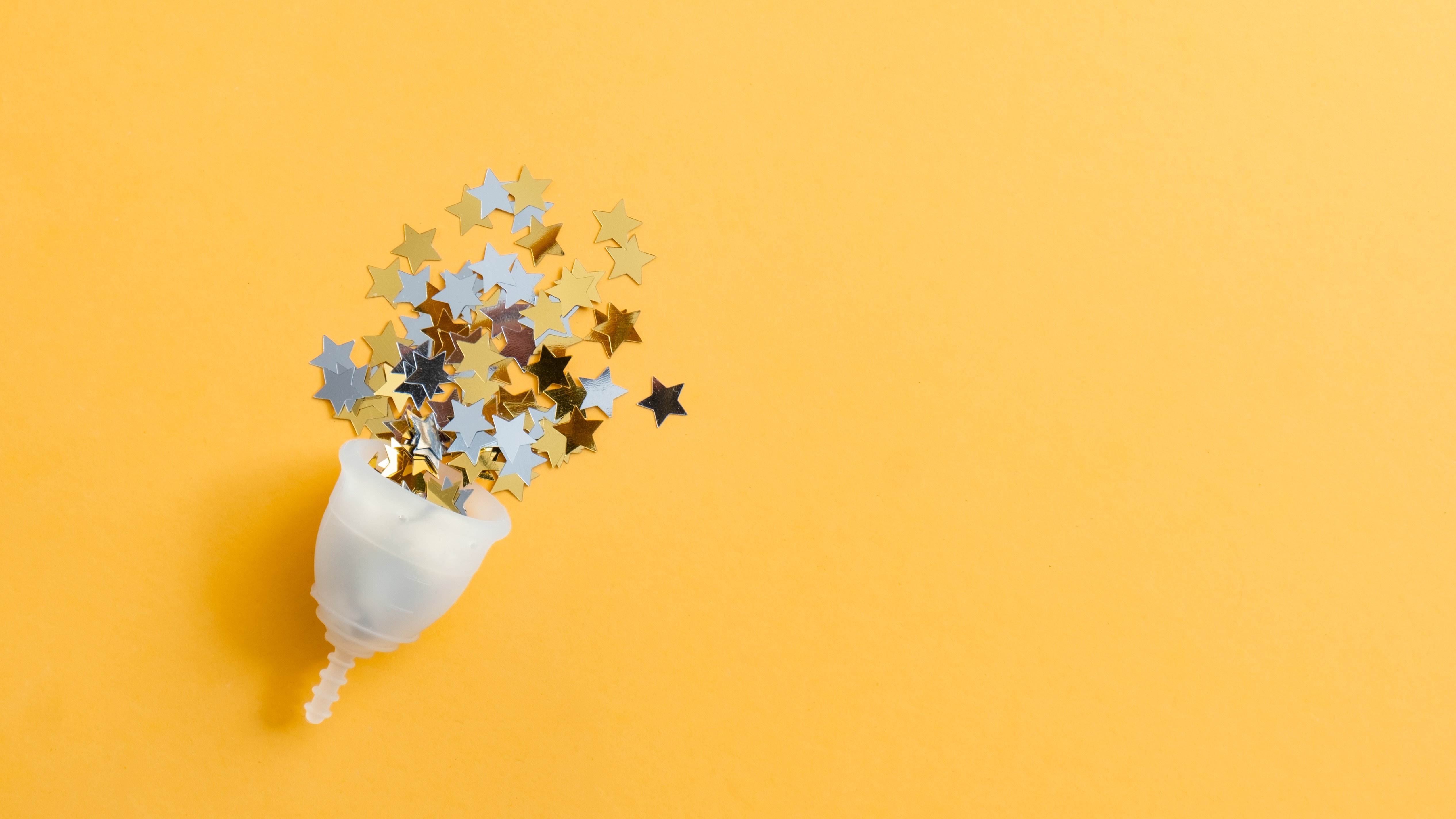How to use a menstrual cup for a more comfortable and sustainable period
Menstrual cups are set to change how you experience periods. From inserting and removing to cleaning—here's our beginners guide on how to use them

Knowing how to use a menstrual cup correctly could change the way you experience periods forever. From inserting to removing, and cleaning—here the experts share exactly how to use your menstrual cup for safe and sustainable period care.
In recent years, the menstrual cup has risen in popularity as an alternative to sanitary pads and tampons. The eco-friendly product is rated for its sustainability properties and leak-free abilities. Those new to the world of menstrual cups can—understandably—find them a little intimidating. But, you needn't be scared. The best menstrual cups make period care much more affordable, comfortable and sustainable.
The small bell-shaped cups are usually made of silicone or rubber and form a seal against the walls of the vagina to collect menstrual fluid until the cup is removed. If inserted correctly, you won't even feel the cup inside of you. Menstrual cups won't dry out the vaginal tissue either, so could be a great alternative to tampons for those who suffer from vaginal dryness.
However, it's worth noting there's no one-size-fits-all when it comes to these cups. "Menstrual cups are usually chosen based on age and flow levels but other factors such as cervix height or giving birth can influence purchasing decisions," says Carinne Chambers-Saini, CEO and Founder of Diva International, makers of the DivaCup.
Along with the best period tracking apps, once you find the right menstrual cup for you it could be a game-changer for your periods. Nailing the insertion and removal process is key for a successful period with a cup, here's everything you need to know.
How to insert a menstrual cup
The first time can be daunting, but the process will soon become second nature, says Terri Harris, a menstrual, sexual, and reproductive health specialist. "It can be really scary the first time you insert a menstrual cup, especially if you haven’t used something similar to a cup before," she told w&h. "It's very different from even using a tampon, just being super relaxed and taking a lot of deep breaths is so important," she adds (if you struggle, this guide to how to breathe better should help).
Terri also recommends wearing a sanitary pad or panty liner the first few times you use a menstrual cup as you become familiar with the inserting process. Leakage is normal at this stage, so don't be put off!
Sign up for the woman&home newsletter
Sign up to our free daily email for the latest royal and entertainment news, interesting opinion, expert advice on styling and beauty trends, and no-nonsense guides to the health and wellness questions you want answered.
To insert a menstrual cup, Medzino OB/GYN Dr Kim Langdon suggests following these simple steps:
- Unbox the cup and clean it before use.
- Read the instruction manual provided with your cup.
- Clean your hands with warm soapy water.
- Fold up the cup with your dominant hand.
- Find a comfortable position sitting on the toilet or squatting.
- Find your vaginal opening and slowly insert the folded cup.
- Apply pressure in the direction of the rectum and guide the cup deeper and upward in the folded position until you can barely touch it.
- Allow the cup to pop open from the folded position inside you.
- Adjust from the base of the cup and continue to push if needed.
- Ensure the stem of the cup is no longer pointing out of your vaginal opening, but not deep enough that you can't reach it.
If you'd like a lesson in female anatomy before you begin, our guide to what a normal vagina looks like is useful reading.

How to fold a menstrual cup
Knowing how to fold your cup is an important aspect of the inserting process. "There are lots of ways to fold your cup and that’s where you get to have some fun to determine which one is best for you," says Liz Raphael, an expert at Saalt. "Two of the most popular methods are the pinch fold and the U fold," adds Carinne.
The pinch fold and U fold insertion methods:
- Pinch fold—pinch one side of the cup down towards the middle to create a pointed V shape.
- U fold—fold the cup in half to create a U shape for easier insertion.
How to remove a menstrual cup
Depending on your flow, most menstrual cups can be worn for six to 12 hours. Once you hit 12 hours you should remove your cup. If you go to the toilet and notice blood before that, this is a sign your cup is full and needs to be removed, emptied, and cleaned.
"It's all about knowing your flow and the more you use the cup, the more you'll understand," Terri says.
When you're ready to remove your menstrual cup, you should:
- Wash your hands with warm soapy water.
- Relax the muscles in your lower abdomen.
- Sit on the toilet or squat (first-timers may find it more comfortable to remove in the shower to avoid spills).
- Insert your hand into the vaginal canal and pinch the stem of the cup, gently pulling it towards you.
- When you can reach the base of your cup, pinch it to break the seal it has created.
- Slowly use a wiggling motion to bring the cup down and remove it entirely.
- Empty the cup into the toilet or sink, and clean.

How to clean a menstrual cup
Once you've removed your menstrual cup, it's essential you wash it thoroughly straight away and before you use it again.
After every use, you should clean your cup using warm soapy water or a PH-balanced shampoo which will help prevent vaginal infection.
After every period, it's important to fully sanitize your cup. To do this put your cup in boiling water for five minutes. If you're unable to do this, use 70% isopropyl alcohol spray on a soft cloth to wipe your cup clean. Be sure to let the alcohol evaporate and rinse your cup thoroughly before inserting.
If you clean and care for your menstrual cup correctly, you won't need to replace it for one to two years. It's a money-saving, sustainable alternative to other period products and we bet once you start using a menstrual cup, you won't want to use any other period care ever again!
Holly is a freelance feminist writer, with a particular interest in women’s health, women’s rights and gender equality. Alongside her writing, she is a keen campaigner for gender equality and volunteers for a number of different charities such as Women United and the National Alliance of Women's Organisations (NAWO). She also attended the 65th Commission on the Status of Women conference as a delegate for UN Women UK.